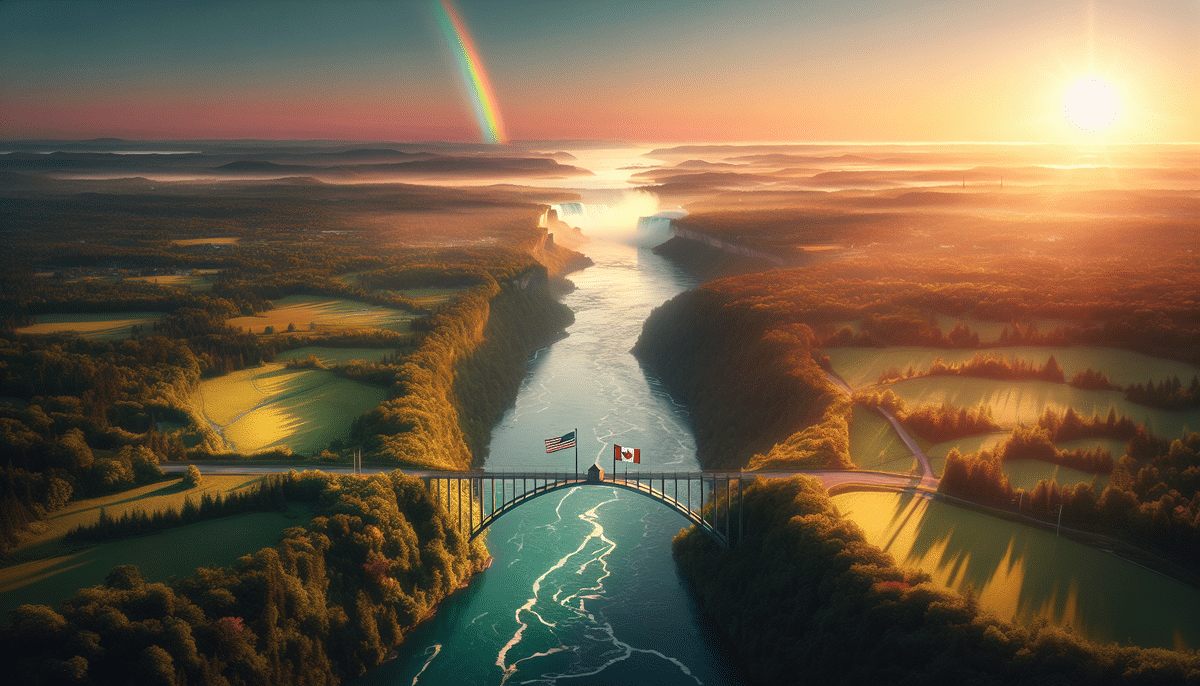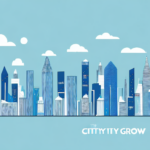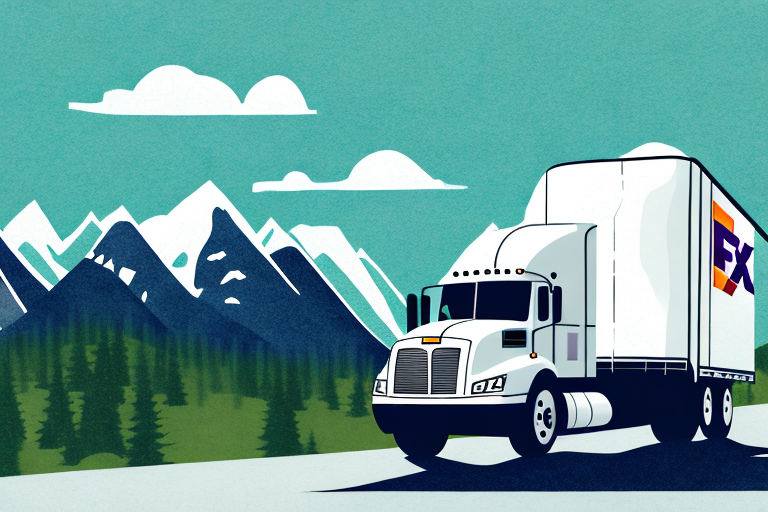Exploring the Contiguous U.S. to Canada Border
The border between the United States and Canada is the longest international border in the world, dividing the two nations for over 5,500 miles. Stretching from Maine to Alaska, the border traverses forests, mountains, and lakes. In this article, we will delve into various aspects of the U.S.-Canada border, including security and immigration policies, geographical landscape, natural wonders, cultural differences, famous landmarks, and economic relations. Read on to discover the fascinating dynamics along this extensive boundary.
Border Security and Immigration Policies
The U.S.-Canada border is one of the most heavily monitored in the world, ensuring national security and public safety. Managed jointly by the U.S. Customs and Border Protection (CBP) and the Canadian Border Services Agency (CBSA), the border employs advanced surveillance technologies such as infrared cameras, drones, and biometric scanners to detect and prevent illegal activities, including immigration, smuggling, trafficking, and terrorism.
Both countries enforce stringent immigration policies regulating the entry and exit of individuals and goods. Travelers must possess valid passports, visas, and other necessary documents, undergoing thorough inspections at border checkpoints. Non-compliance with these regulations can lead to fines, imprisonment, or deportation.
Despite robust security measures, there have been instances of illegal border crossings. In recent years, there has been an increase in asylum seekers crossing from the United States into Canada, placing additional strain on Canadian resources and igniting debates about the effectiveness of current border and immigration policies. The U.S. government has also faced scrutiny over its handling of immigration issues, making border security and immigration policies a persistent and contentious topic in both nations.
- Technological Advancements: Use of drones and biometric scanners.
- Collaborative Efforts: Joint management by CBP and CBSA.
- Policy Debates: Balancing security with humanitarian concerns.
For more detailed insights, refer to the Brookings Institution report on U.S.-Canada border security.
The Geographical Landscape Along the Border
The U.S.-Canada border largely follows the 49th parallel, traversing a variety of landscapes that highlight North America's natural splendor. From the Atlantic Ocean to the Pacific Ocean, the border encompasses rocky coastlines, lush forests, rolling hills, prairies, deserts, and glaciers. Notable landmarks along the border include the Great Lakes, the Rocky Mountains, and Niagara Falls.
Contrary to previous mentions, the Grand Canyon is not along the U.S.-Canada border. Instead, significant natural landmarks include:
- Great Lakes: Five interconnected freshwater lakes forming a critical ecosystem.
- Rocky Mountains: Majestic mountain range offering numerous outdoor activities.
- Niagara Falls: Iconic waterfalls attracting millions of visitors annually.
The border also demarcates several national and provincial parks, such as Glacier National Park, Banff National Park, and Algonquin Provincial Park. These parks offer opportunities for hiking, camping, fishing, and experiencing pristine wilderness.
Additionally, bi-national parks like Waterton-Glacier International Peace Park and Peace Arch Park symbolize the peaceful relationship between the two nations and serve as hubs for cultural and environmental preservation.
Natural Wonders Along the Border
The U.S.-Canada border is home to numerous natural wonders that captivate millions of visitors each year. Among the most prominent is Niagara Falls, situated on the border between New York and Ontario. Comprising Horseshoe, American, and Bridal Veil Falls, Niagara Falls offers breathtaking views and exhilarating boat tours.
Banff National Park in Alberta is another must-visit destination, featuring scenic lakes, glaciers, hot springs, and diverse wildlife. The border regions of Alaska and Yukon also offer opportunities to witness the mesmerizing Northern Lights, a natural phenomenon showcasing vibrant colors in the night sky.
Beyond these well-known attractions, the border region boasts lesser-known gems such as:
- Sleeping Giant Provincial Park: Located in Ontario, renowned for its unique rock formation resembling a sleeping giant.
- Boundary Waters Canoe Area Wilderness: A vast area in Minnesota ideal for canoeing, kayaking, and observing pristine forests and wildlife.
These natural wonders not only enhance the region's beauty but also contribute significantly to tourism and local economies.
For more information, visit the National Park Service and Parks Canada websites.
Cultural Differences and Similarities Between the Two Nations
The U.S.-Canada border is not only a political boundary but also a reflection of the cultural diversity and shared values between the two countries. While both nations recognize English as a predominant language, Canada officially recognizes both English and French, highlighting its bilingual heritage.
Distinct cultural elements include:
- United States: Known for its cowboy culture, Hollywood influence, fast food industry, and diverse music genres.
- Canada: Celebrated for hockey, maple syrup, poutine, and its reputation for politeness and multiculturalism.
Despite these differences, both countries share strong bonds in friendship, democracy, human rights, and free trade agreements like the USMCA.
One significant cultural divergence lies in healthcare systems:
- Canada: Utilizes a publicly funded healthcare system providing universal coverage to all citizens.
- United States: Relies predominantly on a private healthcare system, often resulting in high costs and limited accessibility for some individuals.
Another critical difference is in gun control policies:
- United States: Constitutional right to bear arms with widespread gun ownership.
- Canada: Implements stricter gun control laws, resulting in lower rates of gun violence.
These disparities influence societal norms and daily lives in both countries.
Learn more about cultural differences on the Encyclopedia Britannica.
Economic Relations Between the U.S. and Canada
The U.S.-Canada border is a conduit for substantial economic activity, underpinning billions of dollars in trade and investment annually. According to the Office of the United States Trade Representative, bilateral trade between the two nations exceeds $700 billion each year, making them each other's largest trading partners.
Key sectors involved in this trade include:
- Automotive: Joint production and supply chains enhance manufacturing efficiency.
- Energy: Cross-border oil, gas, and renewable energy projects.
- Agriculture: Significant exchange of agricultural products and commodities.
- Technology and Aerospace: Collaborative innovation and research initiatives.
- Tourism: Millions of tourists traverse the border, contributing to local economies.
The border also fosters job creation, innovation, and entrepreneurship, driving economic growth in both countries. Major border crossings facilitate the flow of goods and services, while local markets offer unique products reflective of the diverse economies.
For comprehensive trade statistics, visit the U.S. Census Bureau and Statistics Canada.
Famous Landmarks Along the Border
The U.S.-Canada border is home to numerous landmarks that embody the historical, cultural, and economic ties between the two nations. Notable landmarks include:
- Peace Arch: Located between Blaine, Washington, and Surrey, British Columbia, the Peace Arch stands as a monument to peace and friendship, featuring the flags of both countries.
- Detroit-Windsor Tunnel: An underwater tunnel facilitating vehicular travel between Detroit, Michigan, and Windsor, Ontario.
- Boundary Stone: An ancient marker delineating the original boundary established by the Treaty of Paris in 1783.
These landmarks not only serve as tourist attractions but also symbolize the cooperative spirit and shared heritage of the United States and Canada.
Explore more landmarks on the National Park Service and Parks Canada websites.
The Impact of COVID-19 on Border Crossings
The COVID-19 pandemic drastically affected U.S.-Canada border operations and travel patterns. Both nations implemented stringent travel restrictions and health protocols to curb the virus's spread, leading to the closure of the border for non-essential travel. Travelers faced requirements such as health screenings, quarantine mandates, and pre-departure testing based on their circumstances.
The pandemic's impact extended to:
- Tourism Industry: Significant decline in tourist arrivals affecting businesses and local economies.
- Businesses: Disruptions in supply chains and cross-border commerce.
- Families: Challenges in reuniting and maintaining cross-border relationships.
Despite these challenges, both countries have been working towards safely reopening the border, gradually lifting restrictions while maintaining essential health measures. Ongoing vaccination efforts and collaborative public health strategies aim to restore normalcy and support economic recovery.
Stay updated with current travel advisories on the CDC website and the Government of Canada travel page.
Adventures and Activities at the U.S.-Canada Border
The U.S.-Canada border region offers a plethora of activities and adventures catering to diverse interests and age groups. Outdoor enthusiasts can engage in:
- Hiking and Camping: Explore extensive trail networks and campgrounds in national and provincial parks.
- Skiing and Snowmobiling: Winter sports opportunities in mountainous regions.
- Fishing and Kayaking: Abundant waterways for recreational fishing and paddling adventures.
- Golfing: Scenic golf courses with stunning natural backdrops.
Cultural aficionados can attend:
- Festivals and Concerts: Diverse events celebrating music, art, and local traditions.
- Exhibitions and Museums: Showcasing the rich history and cultural heritage of the border regions.
Food and drink enthusiasts can indulge in local culinary delights, including:
- Craft Beers and Wines: Tours and tastings at local breweries and wineries.
- Regional Cuisines: Sample specialties that reflect the unique flavors of the border areas.
Accommodation options range from luxury resorts to rustic cabins, ensuring comfortable and memorable stays for all visitors.
Plan your activities with resources from the Outdoorsy and TripAdvisor websites.
Food and Drink Specialties Found on Both Sides of the Border
The U.S.-Canada border region is a culinary haven, offering a diverse array of food and drink specialties that reflect both local traditions and global influences. Popular specialties include:
- Poutine: A Canadian dish featuring fries topped with cheese curds and gravy.
- Maple Syrup: A sweetener derived from the sap of maple trees, widely used in both countries.
- Bison Burgers: A lean and flavorful alternative to traditional beef burgers.
- Craft Beer: Locally brewed beers available in various styles and flavors.
Additionally, visitors can explore local wineries, distilleries, and breweries that offer tours and tastings, providing a glimpse into the region's beverage production. These establishments often showcase the unique terroir and artisanal techniques that define their products.
For a comprehensive guide to regional specialties, visit the Eater and Bon Appétit websites.
Unique Souvenirs to Buy at the U.S.-Canada Border
The U.S.-Canada border region offers an array of unique souvenirs that capture the essence of local culture, history, and craftsmanship. Popular souvenirs include:
- Indigenous Art and Crafts: Totem poles, jewelry, pottery, and other handcrafted items reflecting Native heritage.
- Hockey Merchandise: Jerseys, caps, and memorabilia for sports enthusiasts.
- Flags and Memorabilia: Canadian and American flags, magnets, patches, and miniature models of famous landmarks.
- Maple Syrup Products: Candies, sauces, and spreads made from authentic maple syrup.
- Duty-Free Items: Perfumes, cosmetics, chocolates, and tobacco products available at border stores with tax and duty exemptions.
These souvenirs serve as memorable keepsakes and gifts, representing the rich cultural tapestry of the border regions.
Discover more souvenir options on the Lonely Planet and Visit Canada websites.
Tips for Crossing the U.S.-Canada Border with Ease
To ensure a smooth and hassle-free experience when crossing the U.S.-Canada border, visitors should adhere to the following tips:
- Carry Necessary Documents: Ensure passports, visas, and travel itineraries are up-to-date and easily accessible.
- Be Honest and Respectful: Answer border officers' questions truthfully and provide additional information when requested.
- Declare Goods: Accurately declare all goods and gifts, providing proof of their value and origin if necessary.
- Avoid Prohibited Items: Do not carry illegal drugs, firearms, or hazardous materials to prevent severe penalties.
- Stay Informed: Familiarize yourself with the latest border policies, operating hours, wait times, and traffic conditions to plan your travel accordingly.
Additionally, consider using trusted resources such as the CBP website and the CBSA travel page for the most current information and guidelines.
The Future of the U.S.-Canada Relationship
The U.S.-Canada border symbolizes the enduring and evolving relationship between two neighboring nations with a shared history and mutual interests. Despite facing challenges and differences, the United States and Canada continue to collaborate on critical issues such as climate change, security, trade, and public health.
The future of their relationship is promising, characterized by:
- Enhanced Cooperation: Joint initiatives addressing global and regional challenges.
- Mutual Respect: Commitment to upholding democratic values and human rights.
- Economic Partnership: Continued growth and diversification of trade relations under frameworks like the USMCA.
Visitors to the U.S.-Canada border will witness firsthand the friendship and warmth that define the border's spirit, reflecting a partnership built on cooperation and respect.
For more information on U.S.-Canada relations, visit the U.S. Department of State and Global Affairs Canada websites.






















